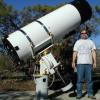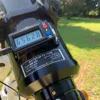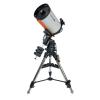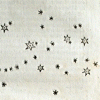Well, I will not complain about my mount but here is my story...
5 years ago, I was looking for a sturdier mount than my CG5-GT... after considering a lot of factors and eliminating lots of candidates only two mounts were on the table; a CGE-Pro and a Vixen New Atlux. IIRC CGE-Pro was rated for 95 pounds and Atlux was rated for 75 pounds.
At that time, some were very happy with their CGE-Pro's but some others were losing a lot of hair ( thank you Orly). Atlux on the other hand, looked to be a more consistent mount according to the reports of all its users.
After days of deliberation I opted for consistency and a smooth PEC curve thus, I went with the Atlux mount.
As soon as I received the product and started reading the manual, I realized that it was rated for only 48.5 pounds. Can you imagine the shock I went through? I ran to my computer and checked the web page of the US dealer from whom I purchased the mount and it was still showing 75 pounds and there was no mention of counterweights. I went to the US distributor's website, it was the same. Then I checked the European and Japanese sites....the payload capacity was stated as 48.5 pounds in both 
You may not find this product on US distributors page anymore but Orion is still listing the product with the same specs which led to my purchase. This was the same wording on the dealer's web page and Vixen Optics USA's page at that time.
It took me a while to digest this actually. There was no other mount manufacturer at that time who were including the counterweights when they quoted the payload capacity of their mounts. How would I guess that that would be the case with the Atlux ? There was no way.
Have I regretted my purchase ? No, not a bit! It proved to be a premium mount especially after I switched to the NexAtlux board. I imaged with this mount even at its maximum capacity and it produced acceptable results.... but I never forgot that I was cheated... the sour taste is still there...
I hope they stopped this practice since then.






































